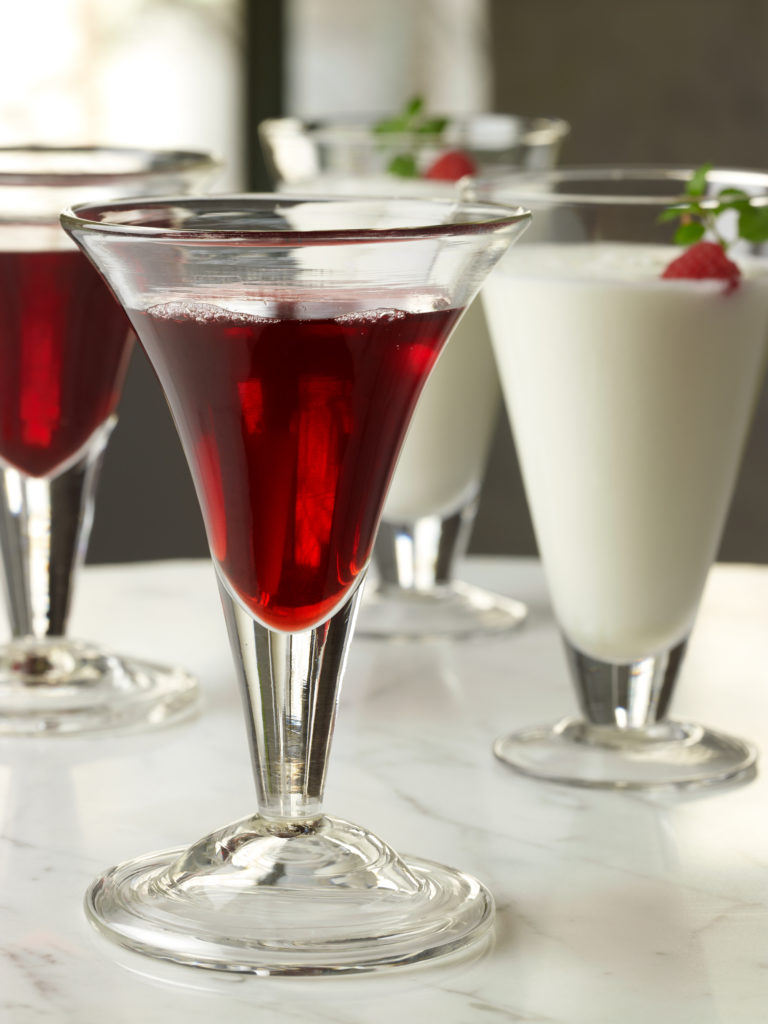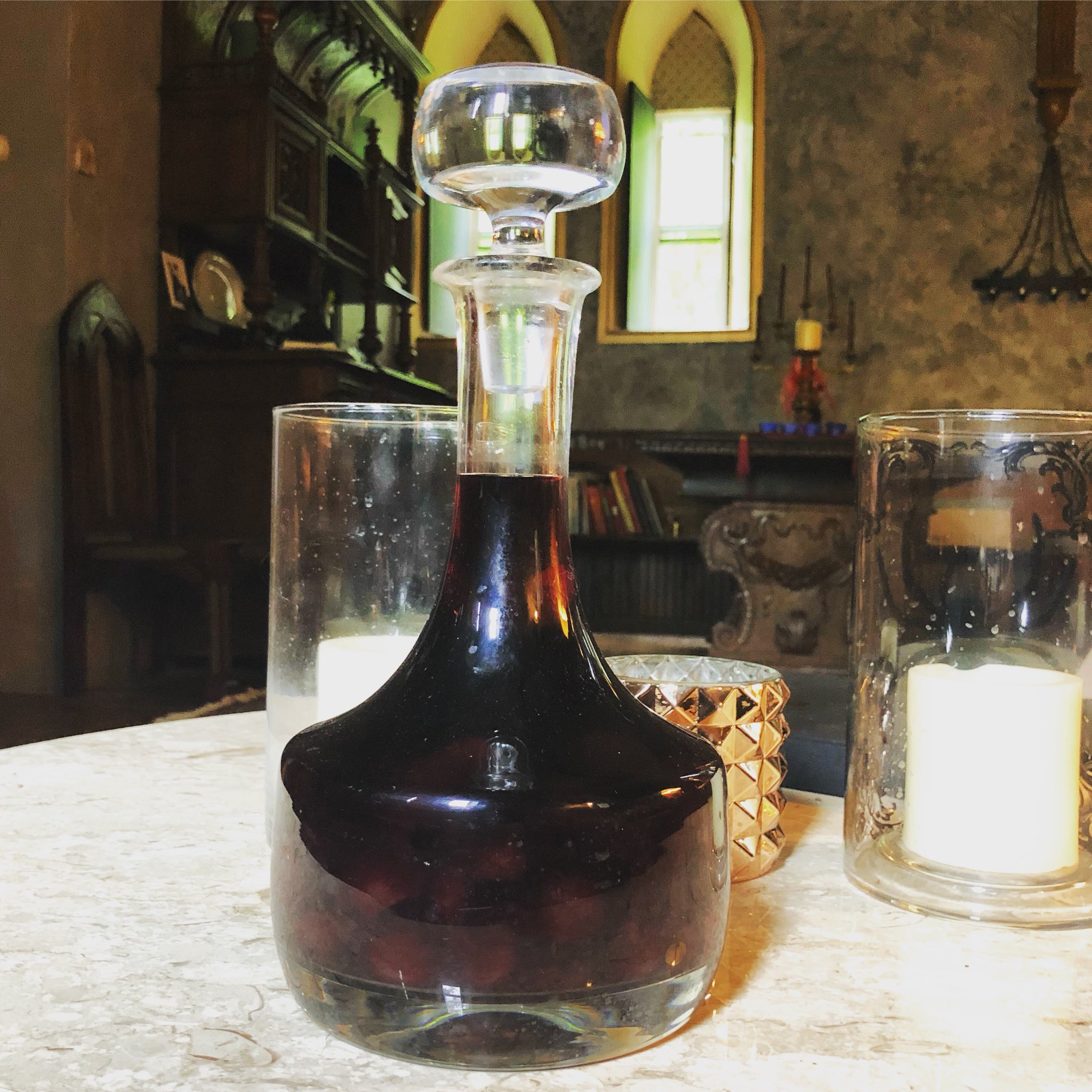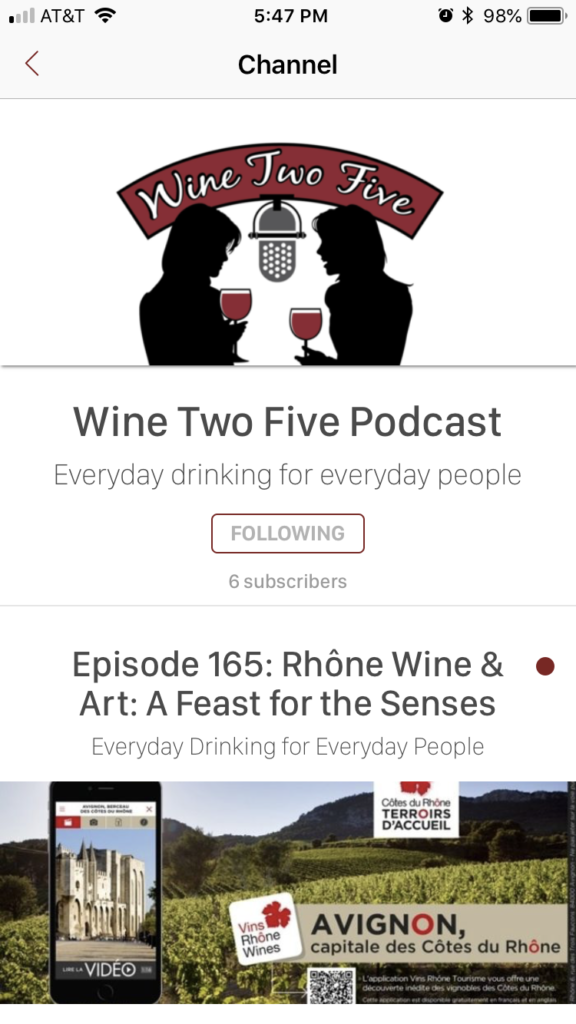Episode 170: Barbera Banter – A Mid-Summer Grape Gab
We love Barbera. It responds well to different wine making processes to result in a great variety of styles. We hate to put it in a style box, but we love to sip it in its many forms. Also, what is a cherry bounce, and what does it have to do with George Washington? Yes, a history lesson too. Much to learn and love in this episode!
In the Glasses: (0:55)
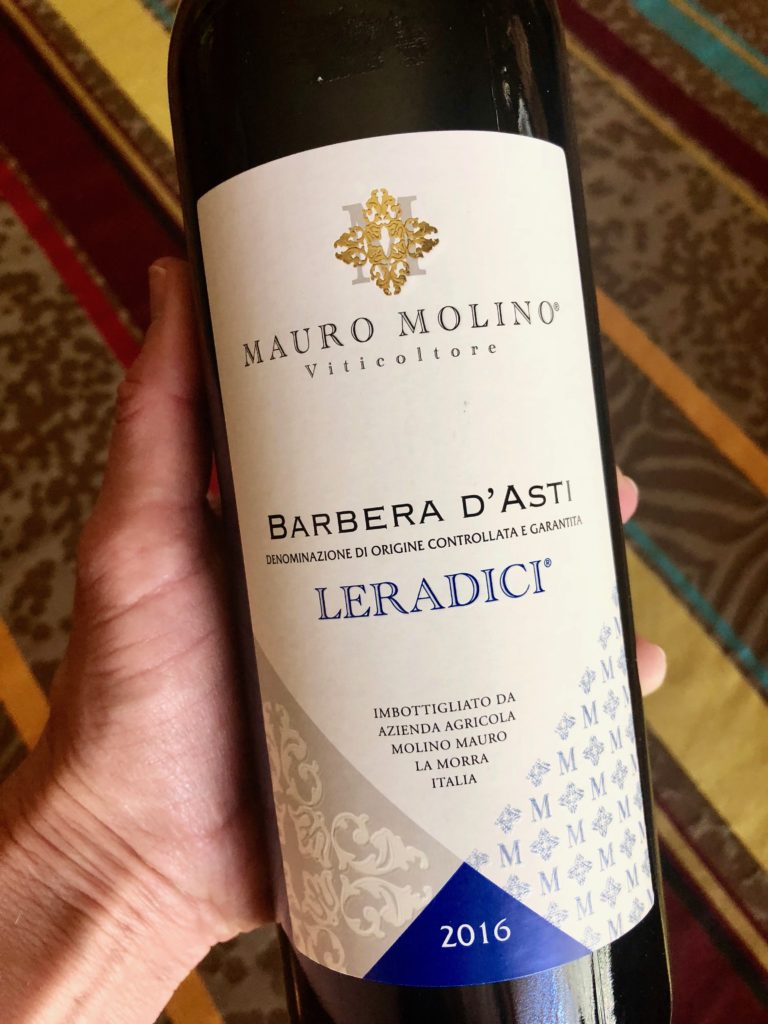
Steph: 2016 Mauro Molino Leradici, Barbera d’Asti DOCG, Piemonte, Italia – 15% abv
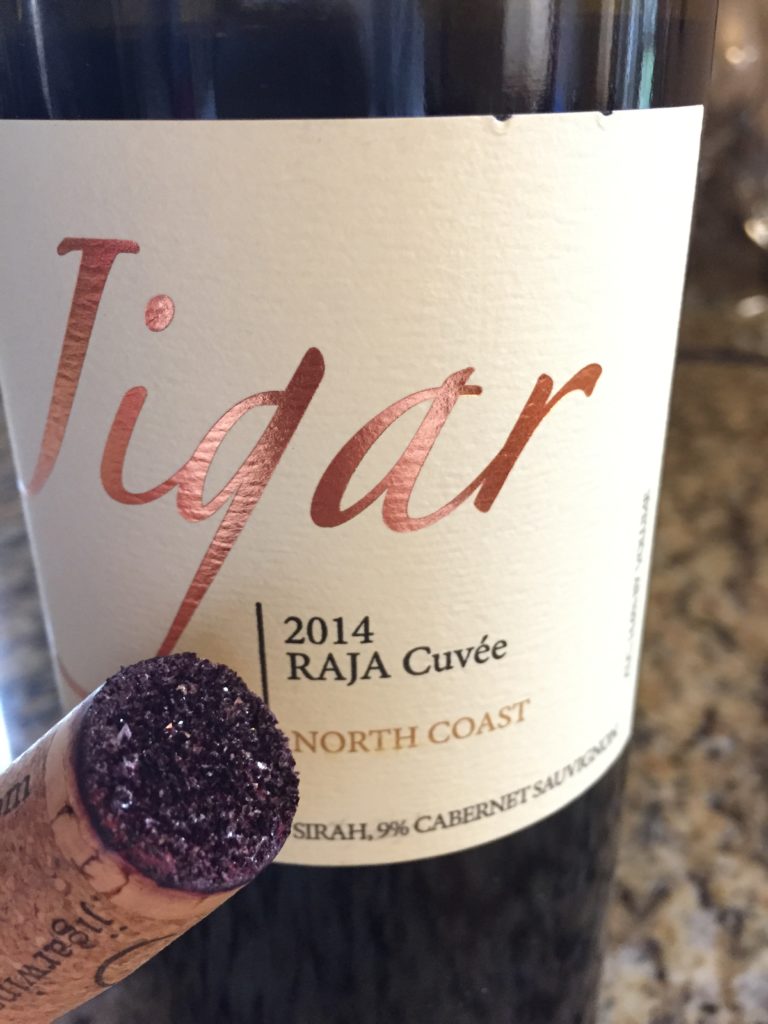
Val: 2014 Jigar Raja Cuvee, North Coast, CA – blend of Syrah, Merlot, Petit Sirah, and Cab Sauv ($24)
July’s Grape Gab: Barbera (3:33)
Nobody puts Barbera in a corner box – at least style-wise.
What it Is (4:00)
Barbera is an Italian red grape that used to be the most planted red variety in Italy. Sangiovese is now the dominant red grape of Italy, and Barbera stands in second place. What makes Barbera special is its low tannins, high acid and rich color and flavor.
It is an adaptable and vigorous grapevine that prefers calcareous soils and sandy/clay loams.
Where it Grows (5:00)
Barbera is originally from Italy and its home is in Piemonte, although there is debate as to whether or not Barbera’s birthplace is Monferrato (in the province of Asti) or Oltrepo’ Pavese.
Other theories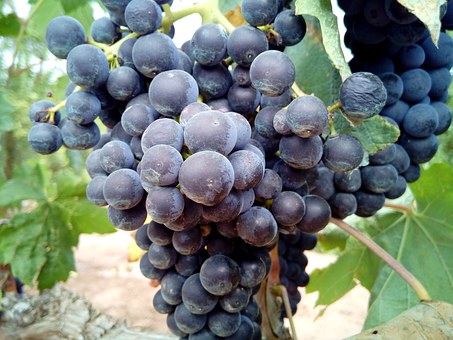
There are some other theories that speculate on the grape’s origins not even being in the Piemonte at all. What we do know is that although its history before the late 18th century is somewhat unclear, it’s DNA evidence has suggested that it doesn’t have much in common with other varieties in Piemonte, nor was Barbera really a popular grape until after the mid 19th century which adds fuel to the “where is this grape’s actual home?” fire.
Piemonte props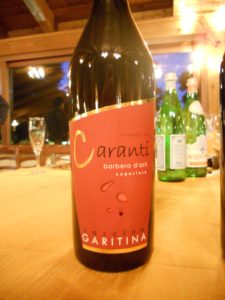
Within Piemonte, the best known appellations are Barbera d’Asti DOCG and Barbera d’Alba DOC. One of the major differences between the two appellations is that in Asti, Barbera is planted on the best vineyard sites, whereas in Alba the Nebbiolo grapes get the premium sites. Many Barolo and Barbaresco producers make one or more Barbera wines.
Barbera d’Asti and Barbera d’Asti Superiore DOCGs encompass a 160 commune production zone within two provinces.
The Barbera d’Asti appellation also includes a newer (as of 2014) subzone, Nizza DOCG (18 communes, only in the Asti province where we find Nizza Monferrato). Nizza DOCG must be 100% Barbera, as Nizza DOCG Riserva DOCG, while Barbera d’Asti and Barbera d’Asti Superiore must contain a minimum of 90% Barbera. (Italian Wine Central, 2018).
Volume & fizz
Barbera del Monferrato DOC and Barbera del Monferrato Superiore DOCG make up the third largest volume producer of Barbera-based wines in the Piemonte region.
The DOCG is only for the red, still wines, while the DOC makes the lightly fizzy (or frizzante) versions, in addition to the still table wines. These require a minimum of 85% Barbera in their DOC and DOCG wines. (Wine Scholar Guild).
While Barbera constitutes about 1/3rd of the land under vine in Piemonte, it also accounts for about 50% of Piemonte wine production.
Elsewhere in Italia
Outside Piemonte, Barbera can be found throughout Italy, sometimes it is blended, sometimes it’s fizzy and other producers make single varietal wines. Barbera can be found in Lombardia and Emilia-Romagna where it is often blended with Bonarda grapes.
Where else in the world?
Other wine producing countries plant it because it is durable and easy-to-grow. When Italians immigrated to North and South America, Barbera came with them. Can you blame them?
In the USA, Barbera grows successfully in warmer climates because even when it is fully ripe, it retains its high acidity. You can find good examples in California – Amador County, Sonoma, Lake County, Lodi, Temecula, Paso Robles and more. Amador County even has an annual Barbera Festival, this year on September 15, 2018, with over 80 California wineries.
Oregon and Washington makes some standout Barberas too.
Elsewhere in the wine world, Barbera is also grown in Slovenia, Australia, Argentina, Israel, and South Africa.
Scandal? We got That (10:04)
We could not let this episode slip by without getting a handle on a scandal.
We’ve mentioned some wine scandals before on the show, and believe it or not, one of the Top 10 Wine Scandals of all time had to do with some bottles of Barbera, among others, back in the mid-1980s.
Summary: About 30 years ago a winemaker wanted to beef up the body of the wine, or increase the alcohol content, so they decided to add methanol to the wine. The amount of methanol added was 19 times the safe, legal limit of .3%. At 5.7%, people die. And that’s what happened. The article is above.
And producers have risen above this, so there is no reason to fear the Barbera.
A Little Name-Calling (13:54)
According to our favorite resource on wine grapes, Wine Grapes (2012), by Robinson, Harding and Vouillamoz, there are some other names for the Barbera grape, including Barbera Amaro, Dolce, Fina, Grossa, and Nera, as well as Lombardesca, and Barbera a Peduncolo Rosso, and Gaietto.
So to translate, it’s bitter, sweet, fine, big, black, long, and having a red stalk? Yes. In other words, versatile!
What it’s Not (14:48)
Some people think there’s a white version, however, Barbera Bianca is not sporting a DNA relationship to Barbera, this is the Bertolino grape. It “cannot be considered a colour mutation” (Robinson, Harding & Vouillamoz, 2012, p. 5000).
In the Glass (15:20)
Barbera styles vary because of location and who’s in charge. The winemaker can really change the natural, lighter style of Barbera by extraction, concentration and barrel/barrique aging, which boosts the tannins in the wine.
Classic Barbera is ruby-purple in color with dominant aromas and flavors of red fruits such as cherries, red currants, and raspberries. There is also moderately expressive black fruits, flowers, herbs, tea leaves and sometimes a meatiness.
However, there is not a universal style of Barbera. There’s not technically a traditional or modern style anymore either, since there are variations and degrees in between now.
Generally Drinking 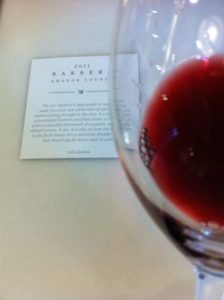
There are hundreds of producers in Piemonte alone, and the range of Barbera wines can be simple, rustic and sharp to robust and silky smooth.
It can also be blended with more powerful grape varieties to make it more beefy and tannic or blended with rounder and softer red varieties to smooth out Barbera’s naturally high acidity.
Generally, your superiore or reserva styles will be more full-bodied, richer styles due to longer and/or more use of small, new oak.
Bottom line – winemaking matters!
Resources & Learn More!
Robinson, J., Harding, J., & Vouillamoz, J. (2012). Wine grapes: A complete guide to 1,368 vine varieties, including their origins and flavours [Kindle Edition]. New York: Ecco.
Robinson, J., & Harding, J. (2015). The Oxford companion to wine (4th ed). Oxford: Oxford University Press.
Wino Radar (19:07)
Steph’s friend Kate LeNormand introduced her to a geeky New Zealand wine when she was in Phoenix. It is Marisco Vineyards “The Ned” Pinot Gris from Marlborough that looks like a rose’ from its pink-hue that it gets from some skin contact. An outstanding wine for $13.
“Thank you Kate and it was fun to meet your work colleagues Nick and Ryan from Action Wine and Spirits. Shout out to you all!”
From Val: A cherry bounce. It will happen. It’s cherry season, yo. Val about bounced out of her chair describing the historical references to George Washington who used to fill his canteen with this stuff!
Here’s what it is (courtesy of the Mount Vernon Inn) :
Here’s what inspired it: A tweet from Kat Kinsman that made Val drool (and research and immediately covet whater the AF a bounce was, because VAL.DID.NOT.KNOW!) Follow @kittenwithawhip! She’s fabulous!
A Word from our Partner in Wine: Weekly Tasting! (22:41)
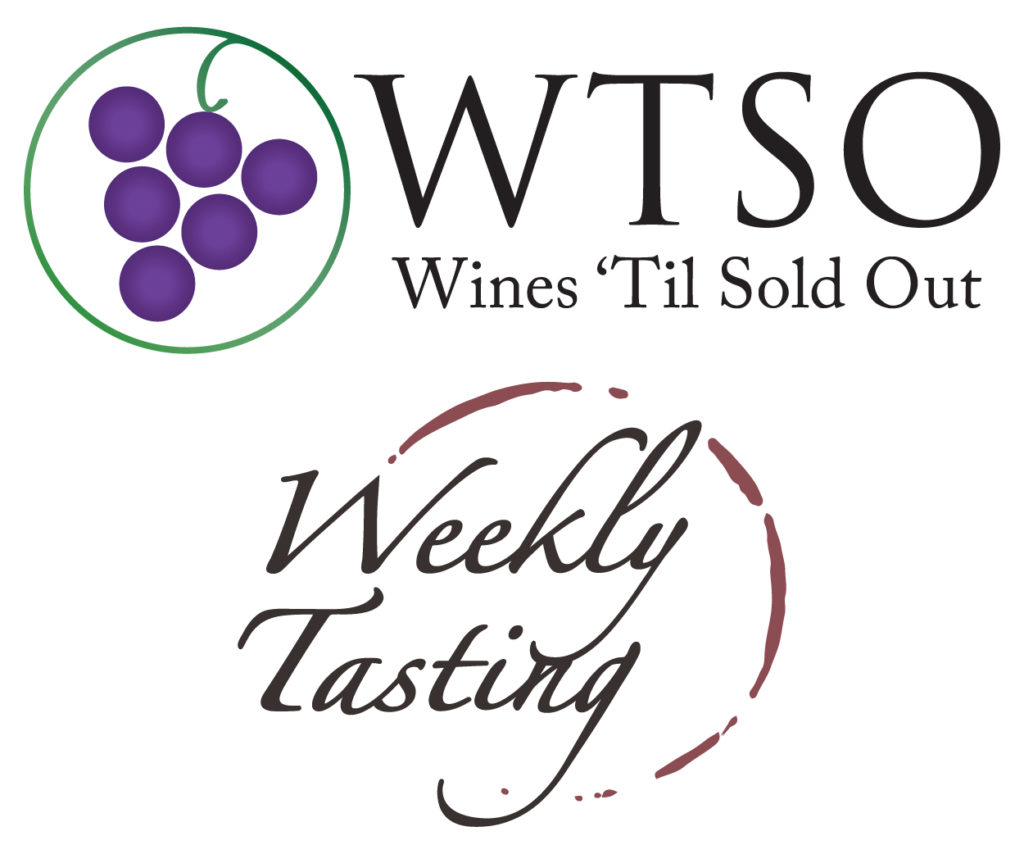 This week we’re talking about the Weekly Tasting. We just got our first shipments!
This week we’re talking about the Weekly Tasting. We just got our first shipments!
Each bottle is hand selected by an esteemed wine expert, in this case, Jennifer Simonetti-Bryan, MW (See episode 128)!
Weekly Tasting is such a great way to discover four new wines in a themed tasting set. We also like the detailed tasting cards with recipes, AND a there’s a video to guide you through the tasting.
You can go to your very own W25 listener page at weeklytasting.com/W25 to sign up and get started!
Great for the #W25Challenge, and *hint* some of our future episodes will be featuring some of the wines and regions they are currently showcasing.
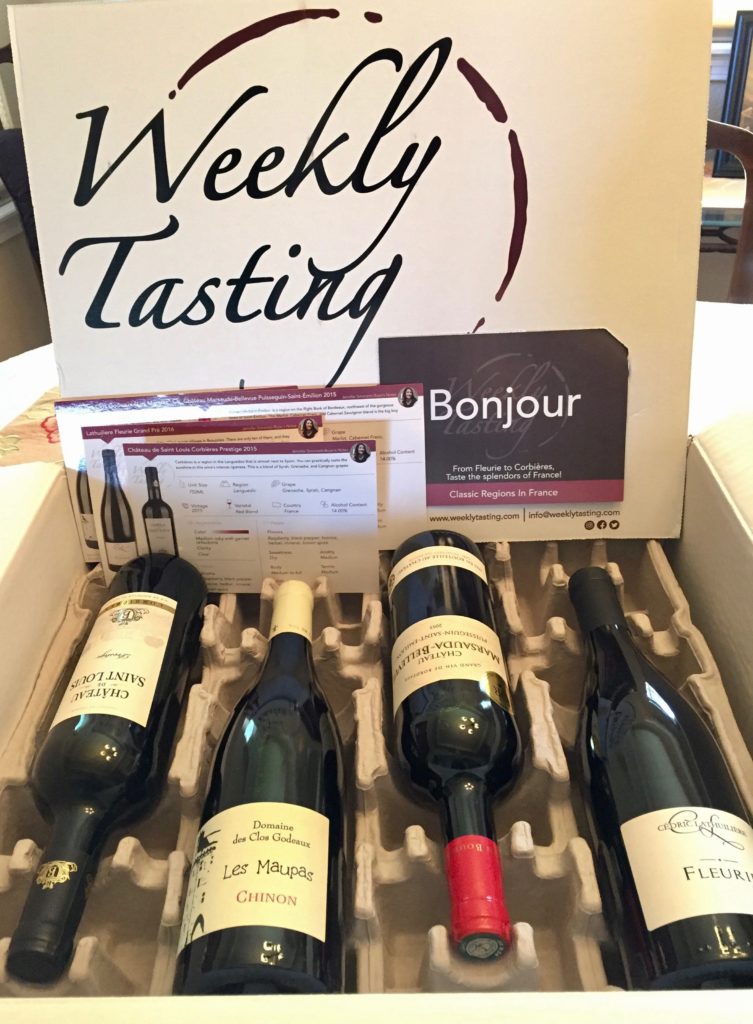
Patreon Love (23:15)
Thank you to our Patrons who support us on our Patreon crowdfunding platform!
“Riserva Superiore Supporter”
- Robin from Girls Gone Grape
“Riserva Supporter”
- Antti in Georgia!
“TENacious Tasters”
- Jeff E from the award-winning We Like Drinking podcast
- Sebastian of Sassi Italy Tours
- Jen in Maryland (and the world, according to her Instagram feed)
- David and Lisa in Illinois
- Ann Marie in Virginia
“It’s not five o’clock and we don’t care” Listeners
- Meg in South Dakota
- Clay in Arizona
- In California – Jon, Andrew, Aswani
- Chantel in Ontario, Canada
- Mary Lou in Pennsylvania
- Cathie in Georgia
- In Colorado – Chris and Janet, Diane
- In Illinois – Steve, Renee
- Cathey in Tennessee
- Ashley in North Carolina
- Sean in Ohio
“Tastemaker Listeners”
- David in Scotland
- Carole in Kentucky
- Karen in California
- Chip & Karen in Pennsylvania
- Danielle
- Sirena in New York
Our Patreon page has details www.patreon.com/winetwofivepodcast on how to be entered into our monthly giveaway, exclusive content, and swag.
All Patrons at the $2/month or higher donation level are entered into the drawing.
Connect: (37:47)
There are other ways to support the show, including visiting our affiliate partners or shopping on Amazon!
Between each weekly chat you can find us on the social spaces @WineTwoFive, and we encourage you to join our private FaceBook group called Wine Two Five Community!
And Instagram!
Connect with Val on Twitter @WineGalUnboxed and everywhere else as @VinoWithVal.
Connect with Steph online as @TheWineHeroine.

